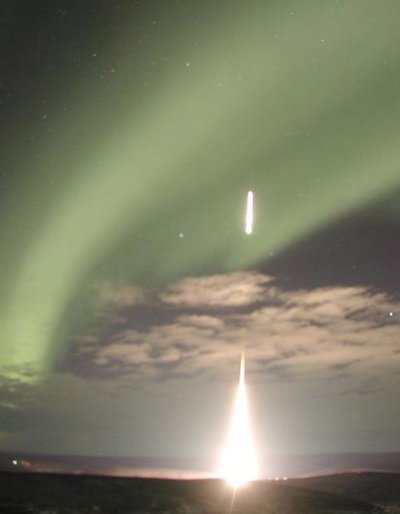[/caption] Early Thursday morning, two sounding rockets simultaneously flew through the veil of an aurora collecting data from both the top and bottom edges of the arc. A team from the University of Iowa waited for precise conditions before launching two different NASA Black Brant rockets from the Poker Flat Research Range near Fairbanks, Alaska just before 1 a.m. Alaska Standard Time. Other rockets have flown through aurorae previously, but this is the first time two rockets were used together. As part of the Auroral Current and Electrodynamics Structure (ACES) mission, the flights will provide insight on the structural subtleties of the aurora, details that researchers may have missed when previous measurements were done using only a single vehicle.
A two-stage Black Brant IX rocket launched at 12:49 a.m. and reached an altitude of more than 226 miles and flew for just under 10 minutes. At 12:50 a.m., a single-stage Black Brant V launched, reaching an altitude of nearly 83 vertical miles, flying for roughly eight minutes.
Principal Investigator Scott Bounds of the University of Iowa said the payloads of each ACES rocket performed well during flight, and the ACES team will begin to analyze all of the data collected, which should keep them busy for the next year. Bounds said this information will help refine current models of aurora structure, and provide insight on the high-frequency waves and turbulence generated by aurorae. [caption id="attachment_24417" align="aligncenter" width="320" caption="A Black Brant Rocket. Credit: NSROC"]
[/caption] The rockets have been poised for launch since January 14, waiting for the right conditions. A stable, thin arc was required for the experiment to perform optimally and finally that arc appeared early on Jan. 29.
Source: University of Alaska, Fairbanks
 Universe Today
Universe Today
